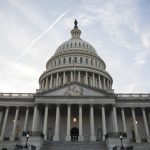When most Americans think of their retirement years, they picture themselves driving a golf ball on a lush green course, relaxing on a warm beach, or hosting a backyard barbecue while the grandchildren play nearby. What they don’t usually envision is a home healthcare aide dropping by twice a week to check their blood pressure, help them bathe, or prepare a hot meal. Rarely, if ever, do their dreams include a life that’s not even in their own home, but rather an assisted living apartment. “Seniors should absolutely plan for their dream retirement,” says Cambridge Realty Capital President Jeffrey Davis, “but a robust retirement savings plan should also include a contingency for home healthcare or assisted living, should this become necessary.”
And according to experts such as economists, medical professionals and financial planners, this will almost certainly be the case for a significant percentage of American seniors. For starters, Americans are living longer than ever before. Life expectancy in the US in 1950 was 68 years. As of 2013, that number jumped to 79. On one hand, a greater life expectancy indicates that healthcare in general has improved and that there is a growing awareness and adoption of healthier lifestyles among Americans. On the other hand, an increased life expectancy puts a greater strain on one’s retirement budget. A savings that only had to last for a few years in the 1950s today must be stretched for 14 years, or even longer in many instances. Ironically, it also means that, while one’s overall health is better today than 70 years ago, it also means Americans face more years of potential disease, accidents or merely ordinary wear-and tear taking a toll on their bodies, all of which will lead to an increased need to access healthcare during the senior years. In fact, experts estimate that fully 50 to 70 percent of Americans over the age of 65 will require some degree of augmented living (assisted living or skilled nursing care) in their lifetimes.
Additionally, America’s baby boomers will all have entered their senior years by 2030, according to the US census bureau, meaning that 20 percent of the entire population of the country will be aged 65 or older. It will be the greatest demand on the healthcare system and housing for seniors that the US has ever experienced. The current number of assisted living beds in the US will not be enough to meet future demand. All of this has the potential to drive up the cost of both housing and healthcare to become even more unaffordable than it already is while at the same time potentially reducing the amount of Medicare and Medicaid funding available to each individual.
Both the US government and private enterprise have recognized the potential for an approaching crisis. Plans are being devised on many fronts to address gaps in services and financing. However, at the end of the day, Americans cannot rely on the government to sustain them throughout their senior years. “All Americans, even Millennials and Post-Millenials, should be saving for a retirement that includes the eventuality of home healthcare and assisted living,” Davis advises, adding that “it’s not a question of if the need will arise, but when.” Davis also points out that Medicare does not cover any portion of the cost of assisted living, and only covers a limited amount of care in a skilled nursing facility, “so including a budget for assisted living in a retirement savings plan is crucial.” According to statistics from the year 2009, the average stay in an assisted living facility is 28 months, and the median length of stay is 21. Davis feels that every American should have a retirement savings plan that will cover at least 28 months of assisted living. Americans who enter their retirement years with chronic health problems or other special health needs already present should budget for more than 28 months.




